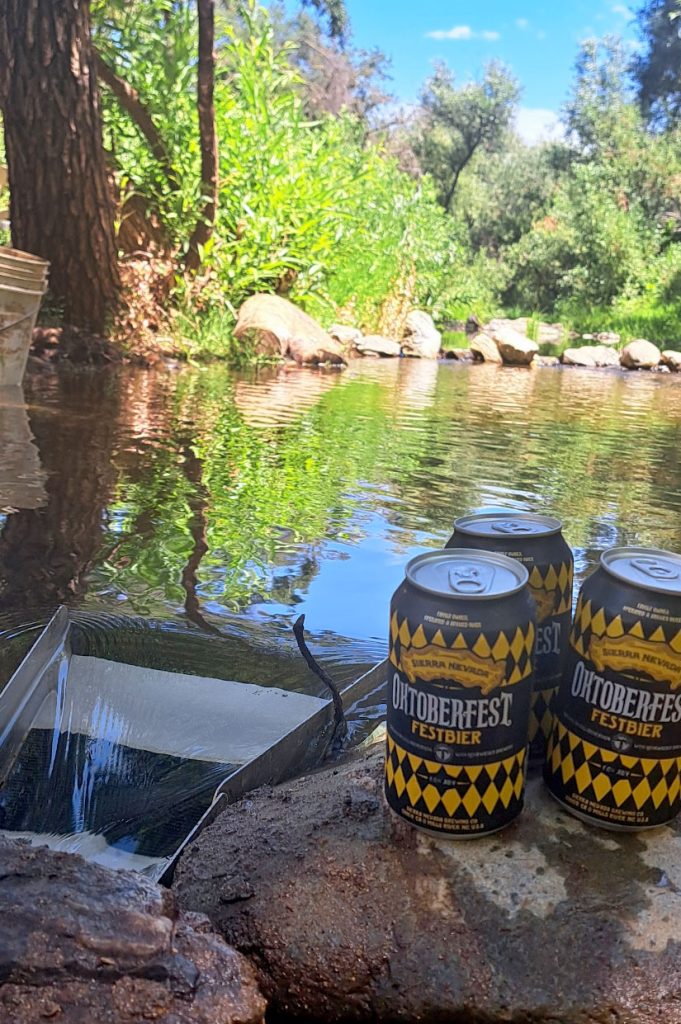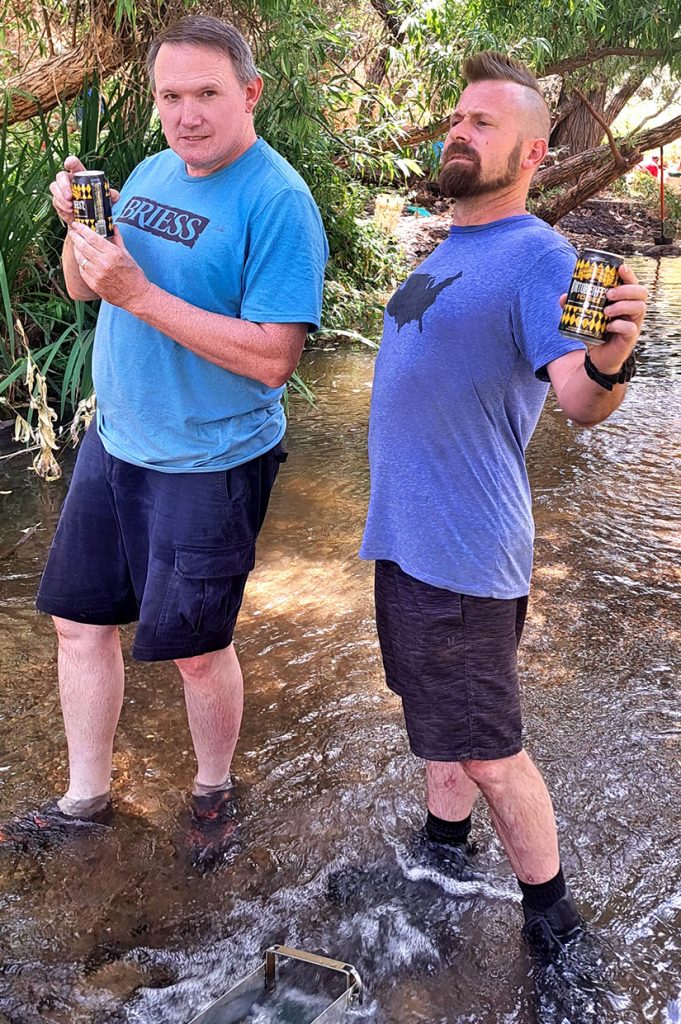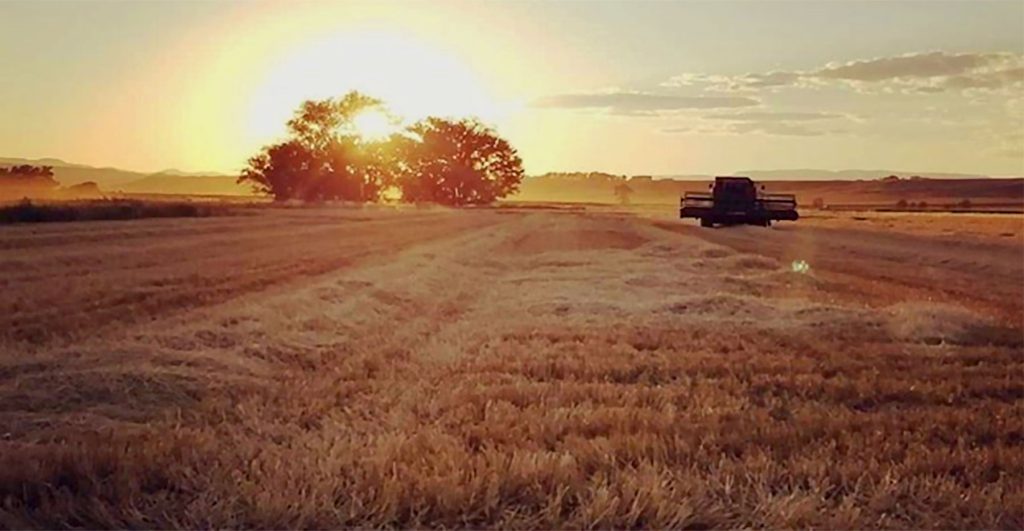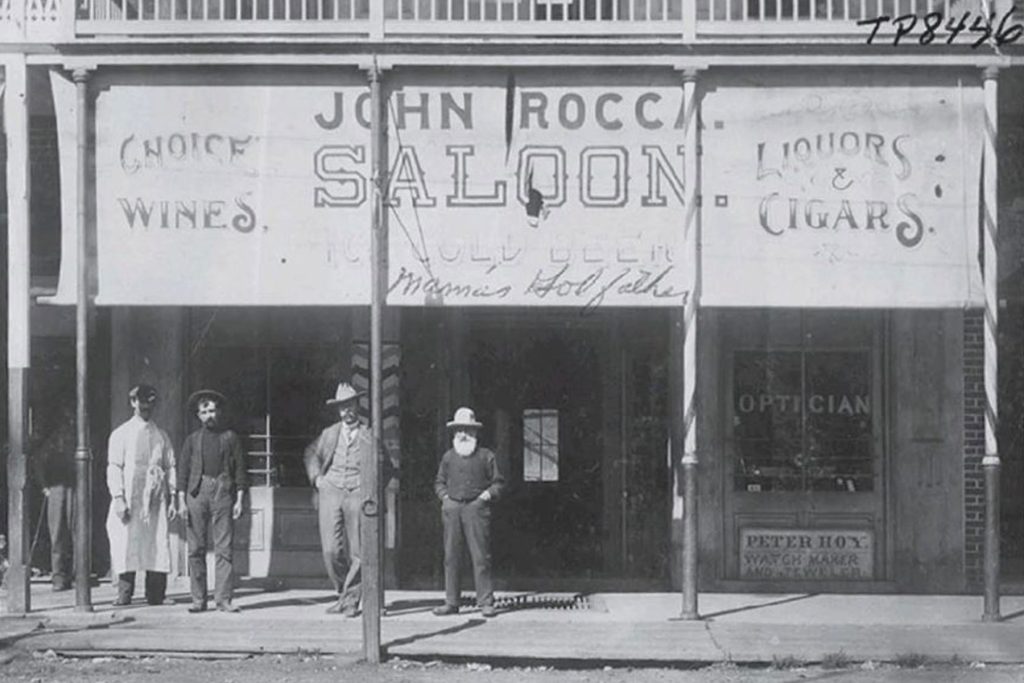
California has a long-storied history of those seeking to make a fortune from both liquid gold and solid gold. Unlike liquid gold in the early days of California, solid gold required much more effort and patience. Solid gold, such as Placer Gold, had to be sifted from sand or hewn from the earth, while liquid gold provided respite and refreshment in mining camp saloons after a long day huddled over a pan on a riverbank or slinging a miner’s pickaxe.
Beginning in 1858, there was a hardy breed of entrepreneurs and adventure-seekers from all walks of life and corners of the earth who risked everything, rushing to the Central California Sierra foothills to find gold and their dreams of fortune.
I recently had the fortune of spending a few hours on Wood’s Creek in Jamestown, CA with tour guide Jerrod Leonhardt of California Gold Panning. Just a one-hour drive east of my home in Stockton, CA is the Mother Lode – a fortune waiting to be unearthed. Armed with shovels, pickaxes, sluice box, and buckets, we began our days searching for fortune. Well, a fella can dream, right?
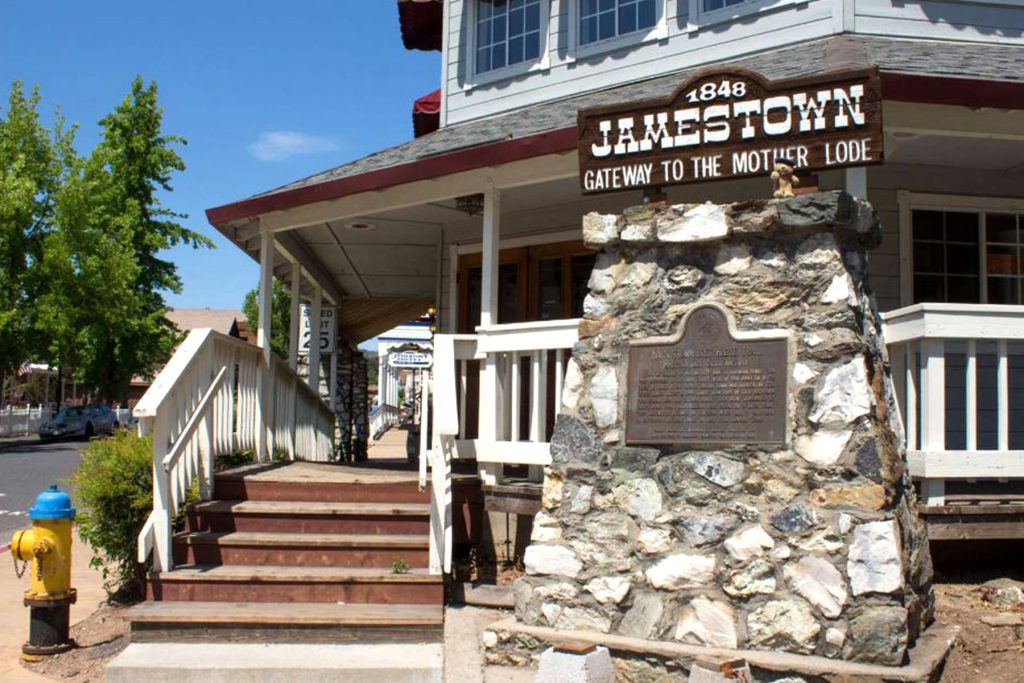
On arriving in Jamestown, CA, it was immediately obvious the days of chaotic rowdy miners and thrill seekers from afar, crowding the saloons and gambling halls, were long gone. In 1854, Horace Snow wrote a series of letters in which he described packed gambling halls about 10,000 sq. ft. in size, so packed and raucous that even a New Englander would have their sensibilities shocked.
After Jerrod provided an abbreviated introduction to the recent snow melt, water flow, and how the flow changed the course of the creek bed, exposing previously covered bedrock and other features of the riverbank, we got to work quickly. These tidbits of knowledge, as it proved by day’s end, were essential in studying to enable us to have a higher chance of locating unexposed pockets in the bedrock and crevasses containing California’s other Gold.
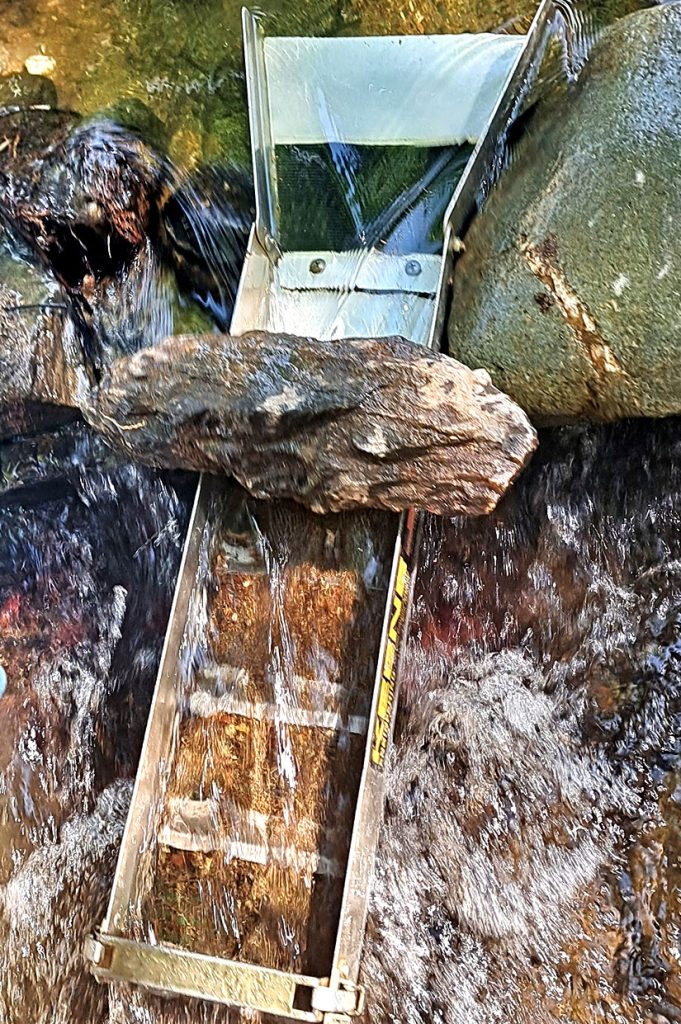
Over the span of four hours, shovel-by-shovel, and pickaxe in hand, we dug away, tossing boulder-by-bolder aside to expose layers of untouched sediment built up during the last three months of snowmelt flow. Into a sluice box I slowly emptied the muddy, sandy contents of each bucket containing sand and gravel shoveled up from the riverbank and bedrock.
After filtering through the sluice box and emptying the contents into a round pan, the final result was “paydirt,” the stuff dreams are made of, which is ground containing ore that can be mined profitably. Jerrod’s technique of stirring and agitating the paydirt from side to side and circulating to remove light sand, mica, and other debris, was reminiscent of a symphony conductor guiding each of the parts to their proper destination.
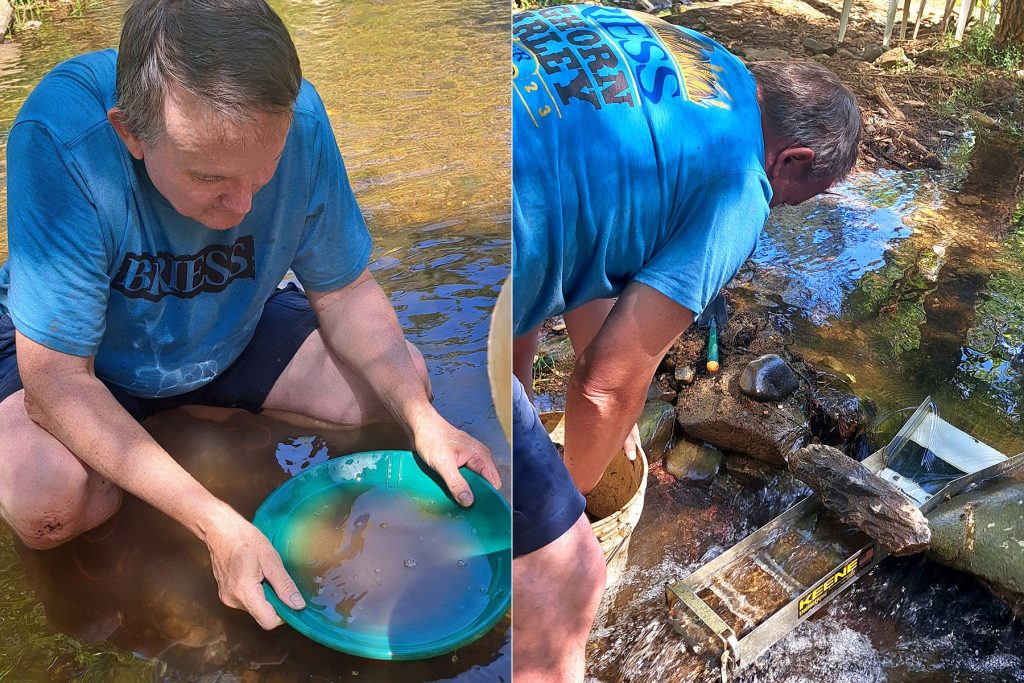
The below vial contained the meager sum of our day’s catch not too shabby for three hours of digging, filtering, and sifting for a new Prospector.
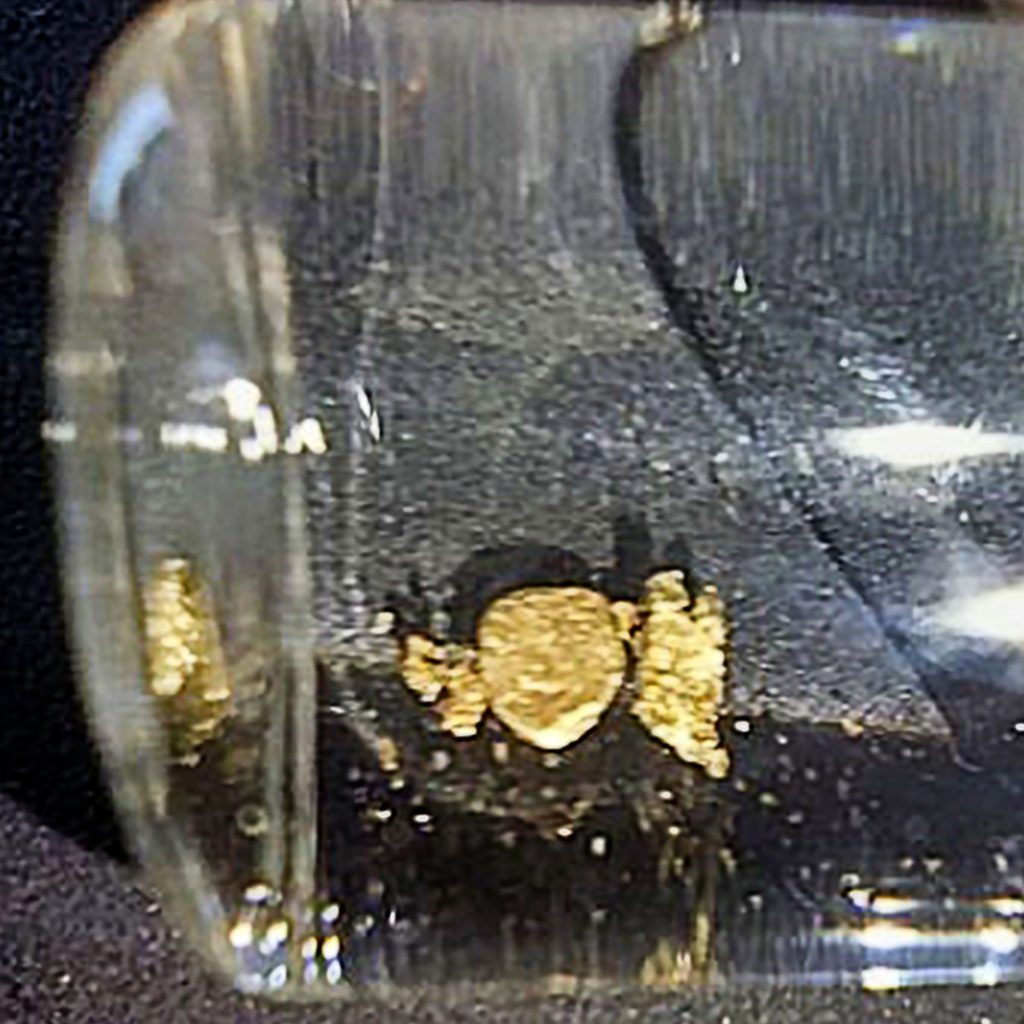
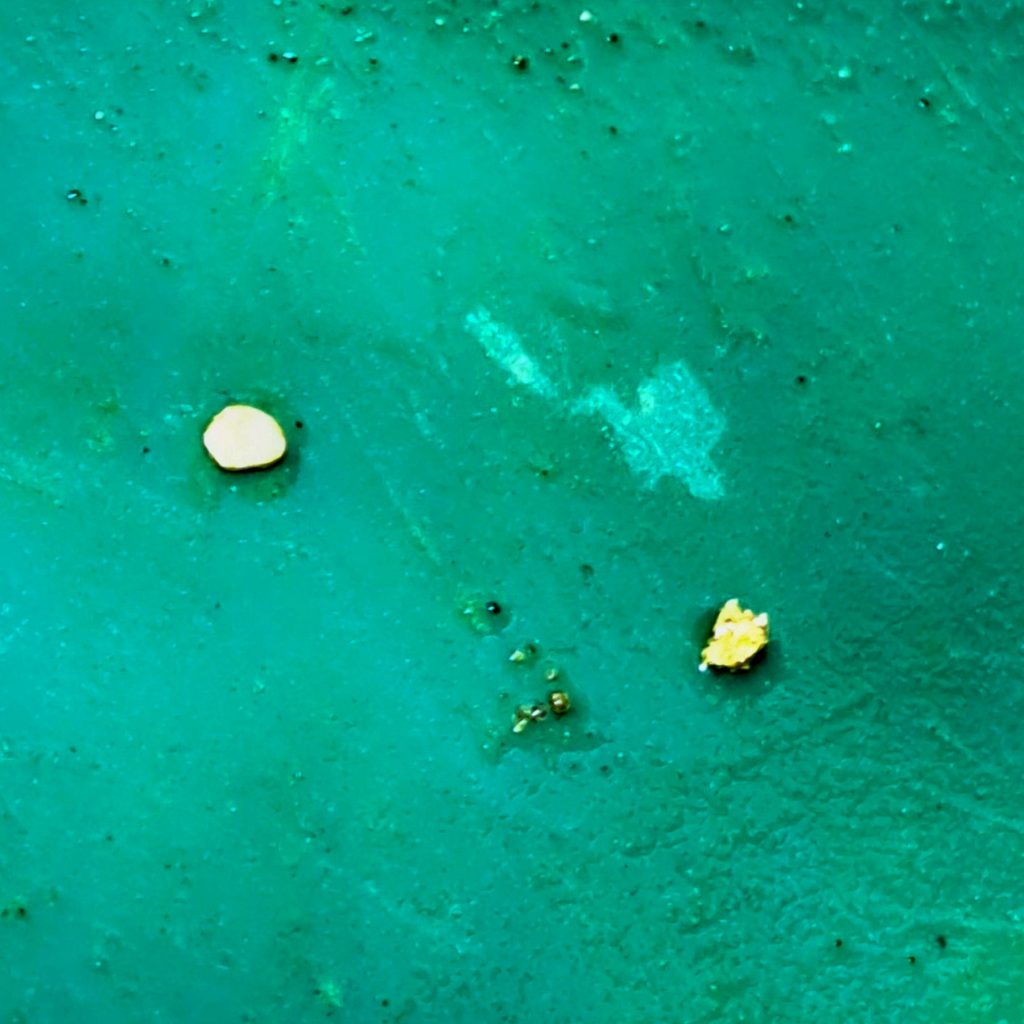
With our day’s labor complete of prospecting for placer gold (separating heavily eroded minerals like gold from sand or gravel) in the sun and cold creek, I cracked open a new can of California Liquid Gold (AKA Sierra Nevada’s Oktoberfest). Much like the prospectors and dreamers of 1848, it was time to celebrate.
